I'm baaaaaaaaaaaaaaaaaaaaack...
I've been working on Mirror Disneyland for so long now that I've done, I think three or four threads on the subject, and it would be walking and talking by now if it were a human child. Between insane life changes through the years and my overall OCD and perfectionism that have prevented me from getting this completed to my standards, this project has been so long now in the making that so many other wonderful threads and ideas have sprung to life in my absence. It's so incredible to see a thriving Armchair Imagineering forum still exists and still works as well as it does in 2024. I'm a veteran of the defunct Visions Fantastic as most of you know, so it warms my heart to see there is still a taste for this online world. There are mirror Disney Worlds, other mirror Disneylands, original dream resorts, open brainstorming threads for new resorts, it goes on and on. I hope that my work in some part played a part in getting some of your works off the ground through the years.
That said, and I really do mean it this time, I will not be returning to this project after this thread is complete. This thread is it, and I mean it this time, no take-backsies. I can only keep trying to finish this project so much and so often, and sometimes you just have to move on. I'm going to give my every effort to finish this entire project and finish it my way. I'm also going to do this in my own time. I can't guarantee the speed at which updates to the overview are made, so I ask for your continued patience!
I can only keep trying to finish this project so much and so often, and sometimes you just have to move on. I'm going to give my every effort to finish this entire project and finish it my way. I'm also going to do this in my own time. I can't guarantee the speed at which updates to the overview are made, so I ask for your continued patience!
With Walt Disney's original Disneyland as a basis for the entire project, I've taken the Park I grew up with (and once worked at) and have revisited it with a "what if" mindset.
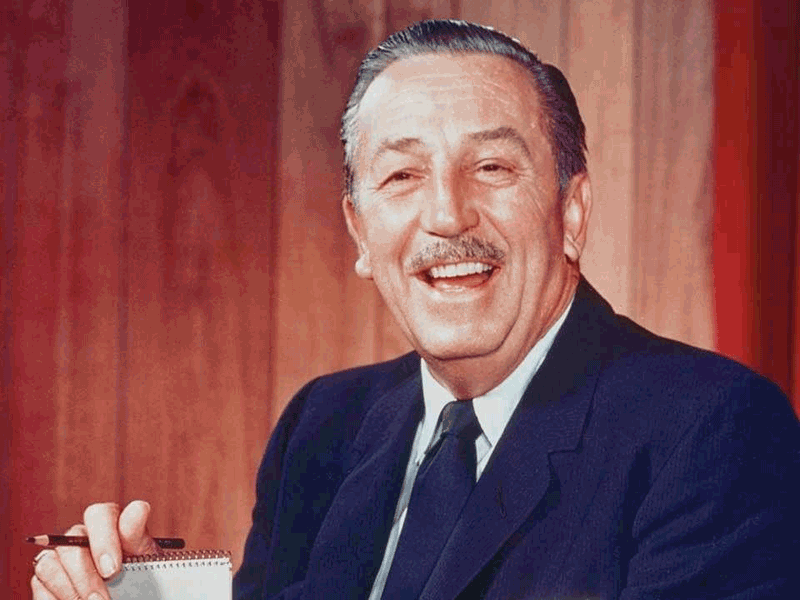
It took magic of a sort to transform 5,000 acres of flat, windswept land in Anaheim, California into the Disneyland Resort that we know today. It’s hard to believe that at one time there was nothing there but rows and rows of orange and walnut trees.
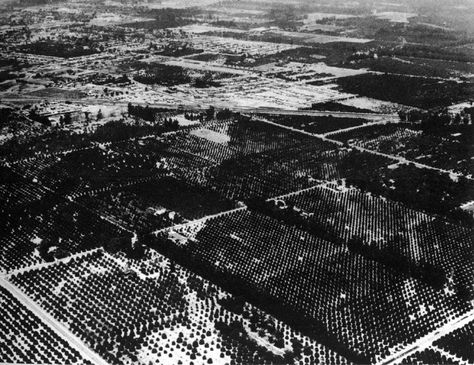
“Disneyland really began when my two daughters were very young. Saturday was always ‘Daddy’s Day’ and I would take them to the merry-go-round and sit on a bench eating peanuts while they rode. And sitting there, alone, I felt that there should be something built, some kind of a family park where parents and children could have fun together.” - Walt Disney
 Disneyland grew out of Walt Disney’s own feeling that an amusement park should offer more to the entire family. Here was no mere amusement park, here was a whole new concept in entertainment. As detailed in The Imagineering Story, “A spark of inspiration first revealed itself in Walt’s backyard railroad. The obsession soon grew beyond model trains. He toyed with the idea of a small playground across the street from his studio. But when the Burbank City Council feared a carnival atmosphere invading the city, they rejected the proposal and Walt stormed out.” What was then called “Mickey Mouse Park'' was relocated. Even with this rejection at hand, the ideas had already outgrown the land. Lillian Disney was skeptical; “Why would you want to get involved with an amusement park? They’re so dirty and not fun at all for grownups.” Walt rebutted, “Well, that’s exactly my point, mine isn’t going to be that way. Mine’s going to be a place that’s clean, where the whole family can do things together.”
Disneyland grew out of Walt Disney’s own feeling that an amusement park should offer more to the entire family. Here was no mere amusement park, here was a whole new concept in entertainment. As detailed in The Imagineering Story, “A spark of inspiration first revealed itself in Walt’s backyard railroad. The obsession soon grew beyond model trains. He toyed with the idea of a small playground across the street from his studio. But when the Burbank City Council feared a carnival atmosphere invading the city, they rejected the proposal and Walt stormed out.” What was then called “Mickey Mouse Park'' was relocated. Even with this rejection at hand, the ideas had already outgrown the land. Lillian Disney was skeptical; “Why would you want to get involved with an amusement park? They’re so dirty and not fun at all for grownups.” Walt rebutted, “Well, that’s exactly my point, mine isn’t going to be that way. Mine’s going to be a place that’s clean, where the whole family can do things together.”
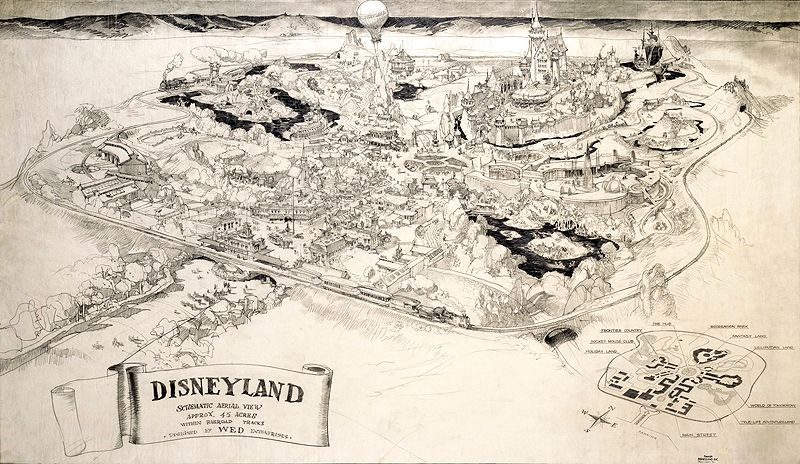 Concept work began before funding was secured. Walt and his brother Roy knew from experience that bankers were not an easy audience. Walt and artist Herb Ryman spent a weekend creating the first true visualization of what we now recognize as Disneyland. The 43 x 70-inch aerial schematic would combine all the ideas that had been imagined thus far, a groundbreaking layout of five themed areas centered around a central hub like spokes in a wheel, easy to find, easy to enter. As Herb recalled, “Walt had unassailable confidence in his convictions. He believed in this thing. And when he looked at you, you got to believe it, too.” With this sketch and the Disney brothers' perseverance and stubborn belief in a good idea, Disneyland quickly won the support of the American film and amusement industry.
Concept work began before funding was secured. Walt and his brother Roy knew from experience that bankers were not an easy audience. Walt and artist Herb Ryman spent a weekend creating the first true visualization of what we now recognize as Disneyland. The 43 x 70-inch aerial schematic would combine all the ideas that had been imagined thus far, a groundbreaking layout of five themed areas centered around a central hub like spokes in a wheel, easy to find, easy to enter. As Herb recalled, “Walt had unassailable confidence in his convictions. He believed in this thing. And when he looked at you, you got to believe it, too.” With this sketch and the Disney brothers' perseverance and stubborn belief in a good idea, Disneyland quickly won the support of the American film and amusement industry.
"It was never a problem to convince the financiers that Disneyland was feasible," Walt recalled, "because dreams of this sort offer much collateral and great reward." Walt never had to sell his vacation home or borrow against his personal life insurance policies as he’d expected to do. Roy quickly found the money to support his younger brother’s ever growing dream. Armed with Herb’s now famous drawing, Roy pitched to the struggling ABC Network, the weekly, one-hour Disneyland which would bring the story of the Magic Kingdom into the homes of millions of American families. Walt captivated audiences. With financiers guessing fast return on their investments and offering their words of encouragement, in no time at all had the brothers secured the funds needed for the world’s first Magic Kingdom. Everyonewas on board, and Disneyland was a hit in the making.
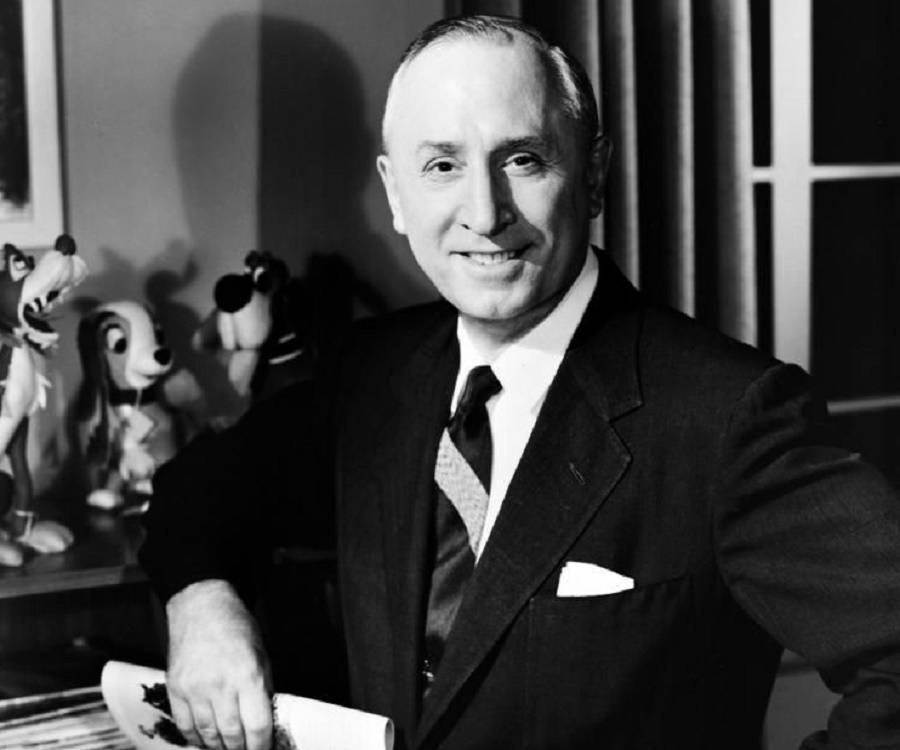
5,000 acres began their transformation into the “Vacation Kingdom of the World” on July 16, 1954. The Stanford Research Institute recommended Anaheim, California, 30 miles southeast from Los Angeles, for its climate and affordable land. The location also laid ahead of a rapidly growing urban development and the advent of the California freeways. Disneyland began with Disneyland, two golf courses, two resort hotels, a campground, and beaches at a man-made lagoon. When Walt Disney World duplicated this formula with more acreage and lakes years later, they spent $400 million. In 1955 it was $80 million. Rear Admiral Joe Fowler, brought in first to consult on the construction of the Mark Twain, was hired as construction boss for the whole project. He got it - all of it - done in under a year, and incredibly so.
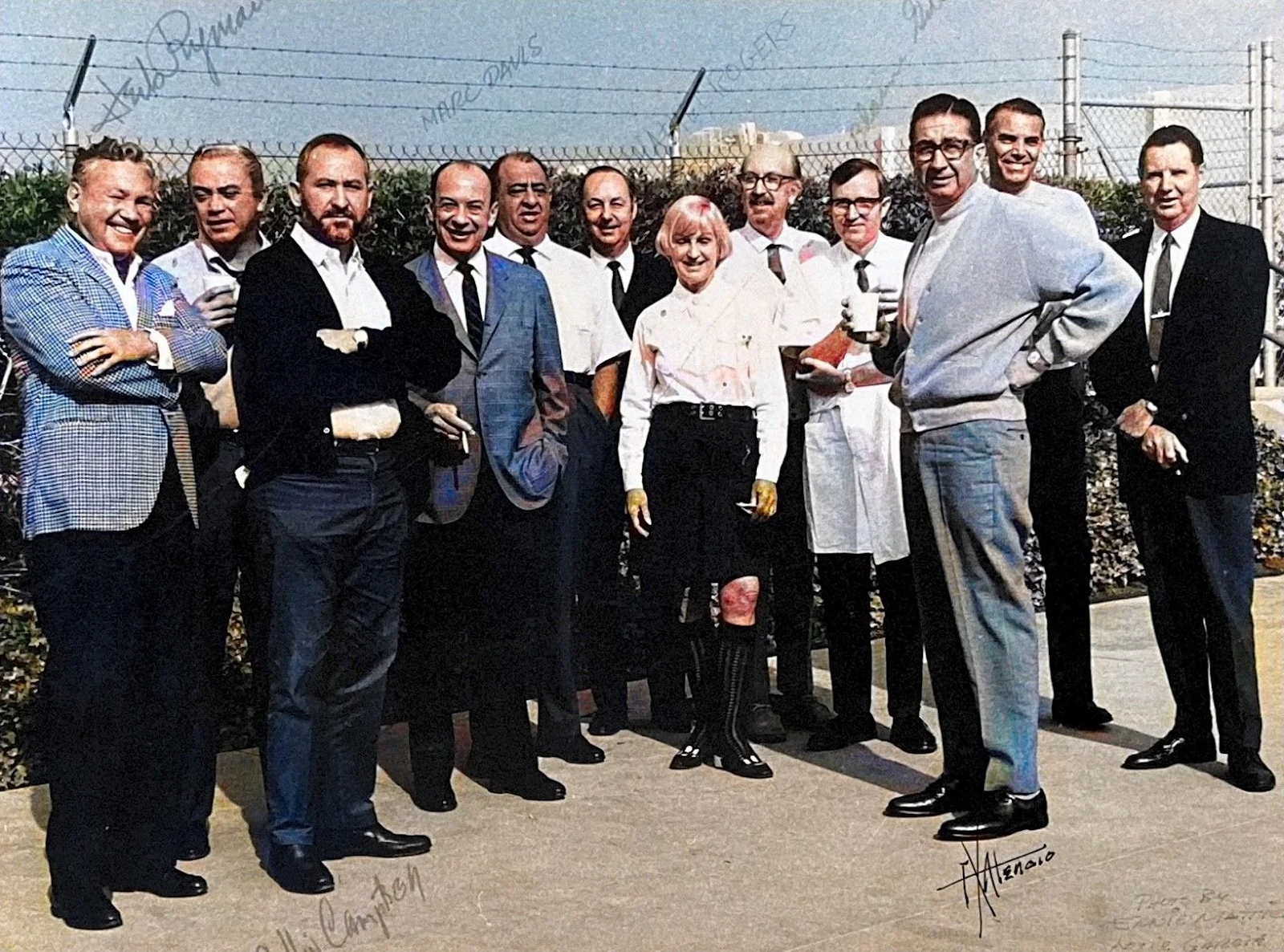 “No one can design Disneyland for you. You have to do it by yourself,” an adviser told Walt. The creative demands placed on WED Enterprises (an acronym for Walter Elias Disney) would call on a blend of talents unequaled in the entertainment industry, and in order to find most of these talents, Walt turned to the field he knew best - motion pictures. In many cases, he selected the people he knew best, those already skilled in the Disney approach to family entertainment. All of the people who designed Disneyland worked first and foremost as filmmakers, and it shows - the design of Disneyland is one and the same with a cinematic wonderland. Each Imagineer applied the craft of filmmaking to the emerging concept of the theme park. The artists, sculptors, designers, architects, engineers, story tellers, special-effects experts and others at WED would be called “Renaissance people” by author Ray Bradbury. Walt Disney later called this original group Imagineers, a name he felt captured both imagination and engineering.
“No one can design Disneyland for you. You have to do it by yourself,” an adviser told Walt. The creative demands placed on WED Enterprises (an acronym for Walter Elias Disney) would call on a blend of talents unequaled in the entertainment industry, and in order to find most of these talents, Walt turned to the field he knew best - motion pictures. In many cases, he selected the people he knew best, those already skilled in the Disney approach to family entertainment. All of the people who designed Disneyland worked first and foremost as filmmakers, and it shows - the design of Disneyland is one and the same with a cinematic wonderland. Each Imagineer applied the craft of filmmaking to the emerging concept of the theme park. The artists, sculptors, designers, architects, engineers, story tellers, special-effects experts and others at WED would be called “Renaissance people” by author Ray Bradbury. Walt Disney later called this original group Imagineers, a name he felt captured both imagination and engineering.
As one designer recalled, “When we began designing Disneyland, we looked at it just as we do a motion picture. We had to tell a story, or in this case a series of stories. In filmmaking, we develop a logical flow of events or scenes that will take our audience from point to point through a story.”
“If we were to ‘leapfrog’ from Scene One to Scene Three, leaving out Scene Two, it would be like sending the entire audience out to the lobby for popcorn in the middle of the film. When they came back, how could we expect them to understand what was happening? In filmmaking, although we can control the sequence of events, the viewer might walk in late and, through no fault of our own, miss Scene One and never catch up to the story. But in Disneyland, we had more control. We designed the entire Park so that a guest couldn’t miss Scene One or Two. From the moment he entered our ‘theater,’ that is, our front gate, Scene One would begin for him.”
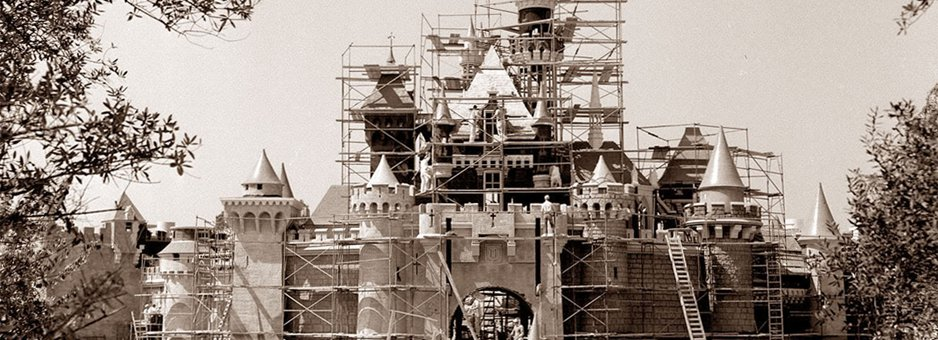
“Walt set a standard early on with the Imagineers,” CEO Bob Iger said in an interview for The Imagineering Story. “There was a standard that surprised people, a standard that enabled people to come in expecting something and then giving them something even beyond that, beyond, really, their own imagination. So they left thinking, ‘Wow.’ Either ‘Only Disney could do that,’ or asking, ‘How did Disney do that?’”
As Disneyland’s design evolved, two important considerations were always in mind to maintain the theme of each area and to ensure easy access. For decades, county fairs and amusement parks had been a confusing amalgam of environmental design. Each show or pavilion competed for the visitor’s attention like billboards on a highway. Disneyland’s design was unprecedented. Rather than competing, five distinct areas would complement each other and contribute to the total Guest Experience. A timeless geometric pattern of radials led to a central hub, which made decisions easier and prevented people from feeling lost. You always know where you are. “Scene One'' is Main Street, U.S.A.
New Orleans Square
"At the Bend in the River, the 'Gay Paree' of the American Frontier. Here All Sizes and Shapes of Ships Sail - from the Majestic Sternwheeler ‘Mark Twain’ to the Mighty, Three-Masted Vessel ‘Columbia.’ At the Bend in the Mighty River, a New Orleans of Days Gone By."
Folktale Forest
"A Backwoods Refuge to the Great Heroes and Legends of the American Frontier. The myths of John Henry and Davy Crockett establish the romance and allure of the American West. Here is a Sleepy Backwoods Hamlet, a Tranquil Refuge to the Great American Myth and Folktale."
Liberty Street
"Here Stirs a New Nation Waiting to be Born. Thirteen Colonies have Banded Together to Declare Their Independence from the Bonds of Tyranny. It is a Time when Silversmiths Put Away Their Tools and March to the Drums of Revolution, a Time when Gentlemen Planters Leave Their Farms to Become Generals, a Time when Tradesmen Leave the Safety of Home to Become Heroes."
***
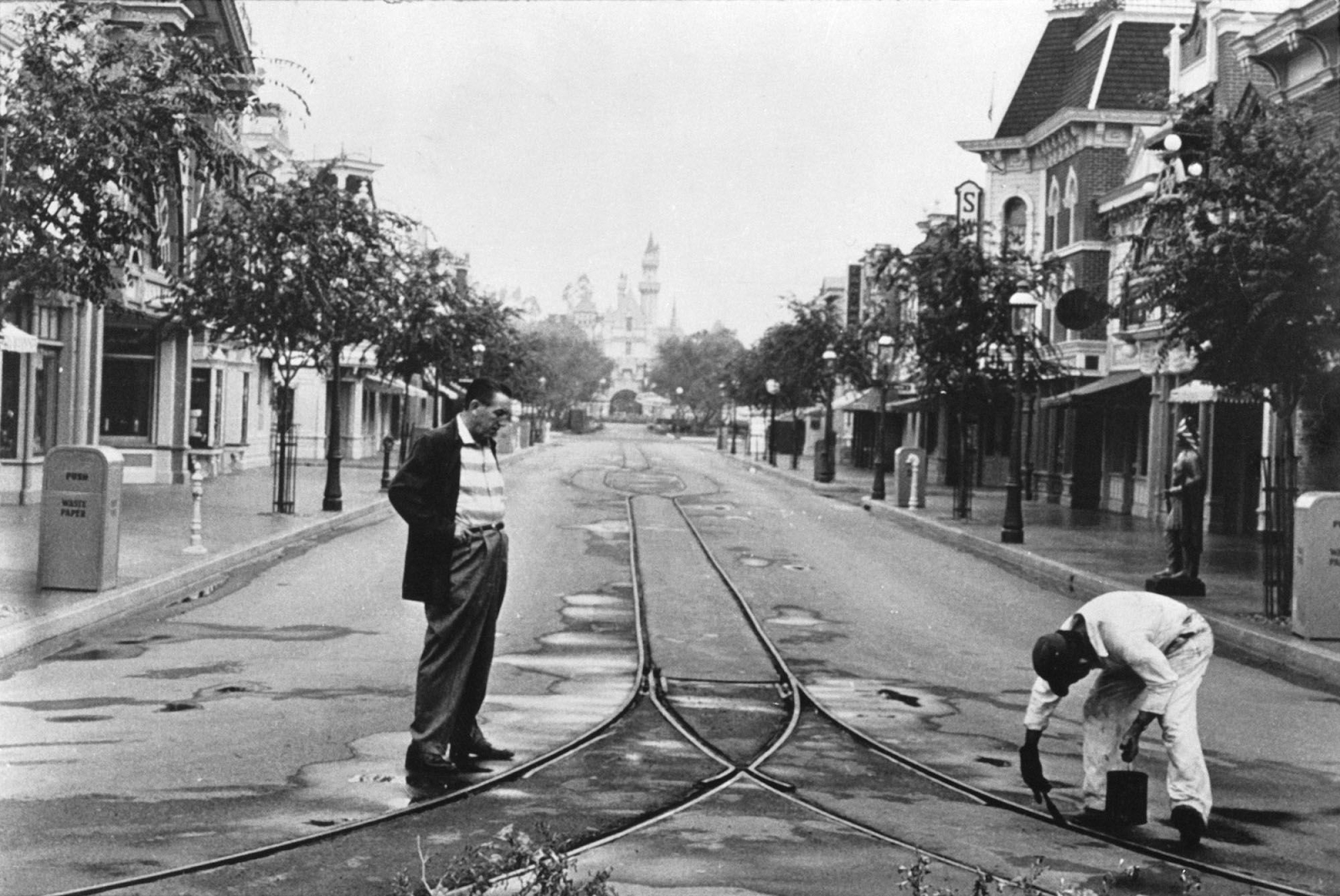
Fantasy Lagoon, a 150-acre lake for beach trips and watersports, was situated far from the gates of Disneyland. Oil tycoon-turned film producer Jack Wrather majority owned and operated the original Disneyland Hotel from 1955 to 1988, then advertised as having an “Olympic Pool” and a “Top of the Park Lounge” with billboards advertising these attractions along the I-5 Freeway. The Marceline Hotel, named for Walt’s boyhood town, was Disney-owned and shared close real estate with a “Magic Kingdom Miniature Golf” and the much larger Golf Centre, gateway to the 18-hole Elias and Fantasy Lagoon Golf Courses which still exist today. 25-cents guaranteed all-day entry to the Disneyland Parking Lot. Holiday Land could hold up to 9,000 guests, designed as the ideal locale for company picnics, family reunions and the like, having its own baseball diamond and accommodations for horseshoes, volleyball, shuffleboard, and square dancing, a giant red and white-striped circus tent, and rows and rows of picnic tables. The Vacationland Recreational Vehicle Park would house RV’s, motor homes, tent trailers and more amidst a man-made forest in the finest recreational vehicle park in all Orange County. It even had an arcade with a billiard room.
In the geographic center and heart of the 5,000-acre property was Disneyland, isolated by its 20-foot berm and distance from the outside world.
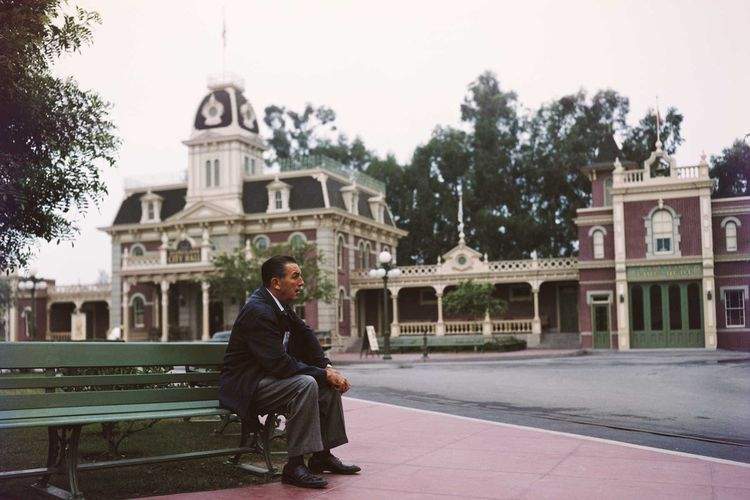
The dream was becoming a reality. One by one, scenes of the Disneyland show were completed, and finally, Walt’s little idea - his bold new concept in family entertainment - was ready for its debut.
“I think that everyone here will one day be as proud to have been at this opening as the people who were there at the dedication of the Eiffel Tower,” actor Bob Cummings remarked, one of the many celebrities gathered for the Grand Opening of Disneyland on July 17, 1955. Will Jones of the Minneapolis Tribune wrote, "If it's an amusement park, it's the gosh-darndest, most happily-inspired, most carefully-planned, most adventure-filled park ever conceived. No ride or concession in it is like anything in any other amusement park anywhere."
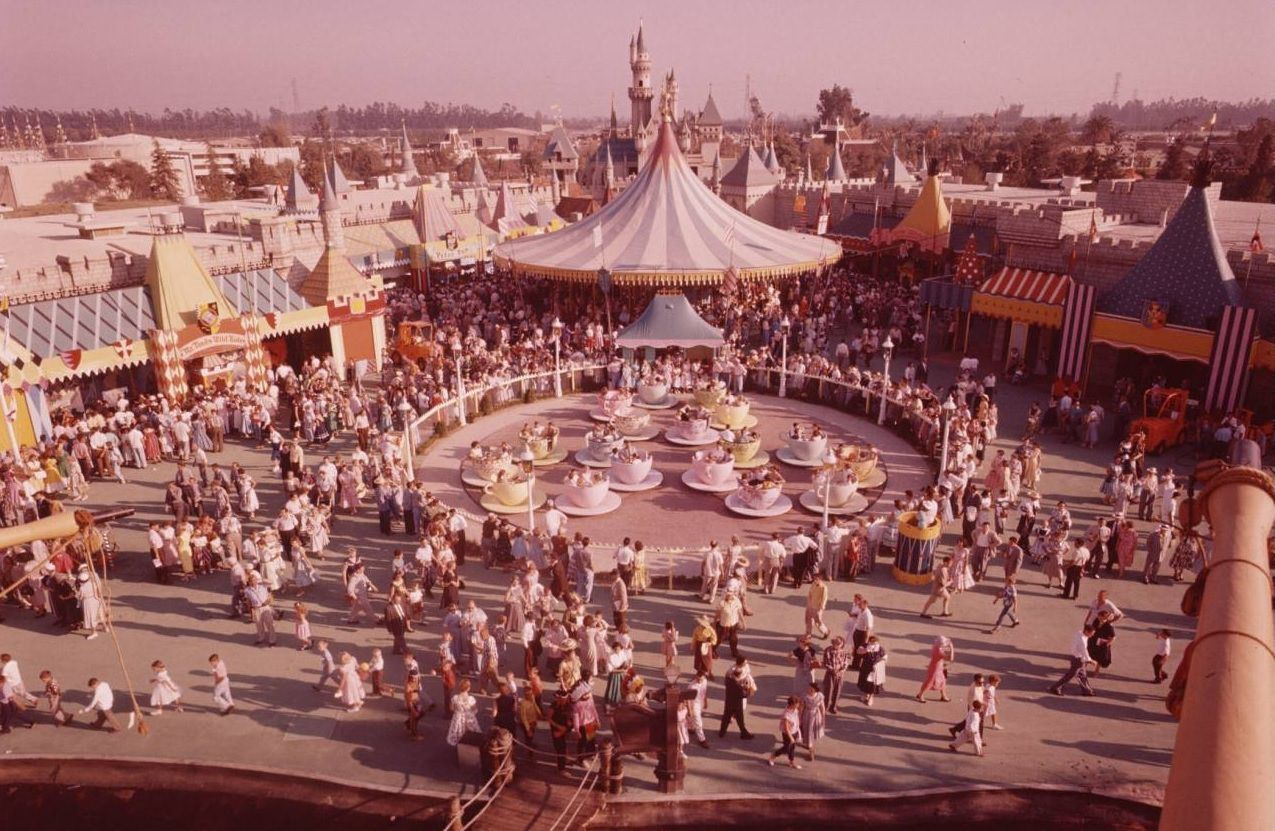 It could have been a disaster. ABC organized the biggest live telecast in history. The number of celebrities and public figures on hand were endless, including host of the telecast, Art Linkletter. It was a premiere unlike anything the world had ever seen. This was Walt Disney's finest moment - a triumph for a man who had dared to dream and boldly reach out beyond his contemporaries.
It could have been a disaster. ABC organized the biggest live telecast in history. The number of celebrities and public figures on hand were endless, including host of the telecast, Art Linkletter. It was a premiere unlike anything the world had ever seen. This was Walt Disney's finest moment - a triumph for a man who had dared to dream and boldly reach out beyond his contemporaries.
At two o’clock that afternoon the gates opened. 10,000 special guests had been invited, but by day’s end, 33,000 people had arrived. Fortunately, it worked. No attractions broke down. Food and beverages were plentiful. Skeptics predicted July 17 to be a “Black Sunday” for Disney, the beginning of the end, but it wasn’t. In its first seven weeks, more than a million people passed through the turnstiles. Disneyland was an artistic and commercial triumph.
Disneyland would have to grow rapidly to meet demand, and as Walt went on to promise, "Disneyland will never be completed as long as there is imagination left in the world." Disneyland has become an international symbol of happiness and inspiration, a living showplace of beauty and magic filled with the accomplishments, joys and hopes of the world. More than 600 million “children of all ages” have enjoyed Walt Disney’s Magic Kingdom, including kings, queens, prime ministers and presidents. Through the years, Disney Imagineers have added new shows, attractions and themed lands, while improving original ones. Although the future holds the promise of even more dreams come true, the first 70 years at Disneyland marked an unforgettable era. The following is a written tour recapturing to the minute detail the history and magic of this alternate-reality.
I've been working on Mirror Disneyland for so long now that I've done, I think three or four threads on the subject, and it would be walking and talking by now if it were a human child. Between insane life changes through the years and my overall OCD and perfectionism that have prevented me from getting this completed to my standards, this project has been so long now in the making that so many other wonderful threads and ideas have sprung to life in my absence. It's so incredible to see a thriving Armchair Imagineering forum still exists and still works as well as it does in 2024. I'm a veteran of the defunct Visions Fantastic as most of you know, so it warms my heart to see there is still a taste for this online world. There are mirror Disney Worlds, other mirror Disneylands, original dream resorts, open brainstorming threads for new resorts, it goes on and on. I hope that my work in some part played a part in getting some of your works off the ground through the years.
That said, and I really do mean it this time, I will not be returning to this project after this thread is complete. This thread is it, and I mean it this time, no take-backsies.
With Walt Disney's original Disneyland as a basis for the entire project, I've taken the Park I grew up with (and once worked at) and have revisited it with a "what if" mindset.
“What if Walt Disney had the financial support needed to build Disneyland?
What if the Disneyland Resort had 5,000 acres instead of 500?
What if Disney and Universal combined creative forces instead of Disney and MGM?”
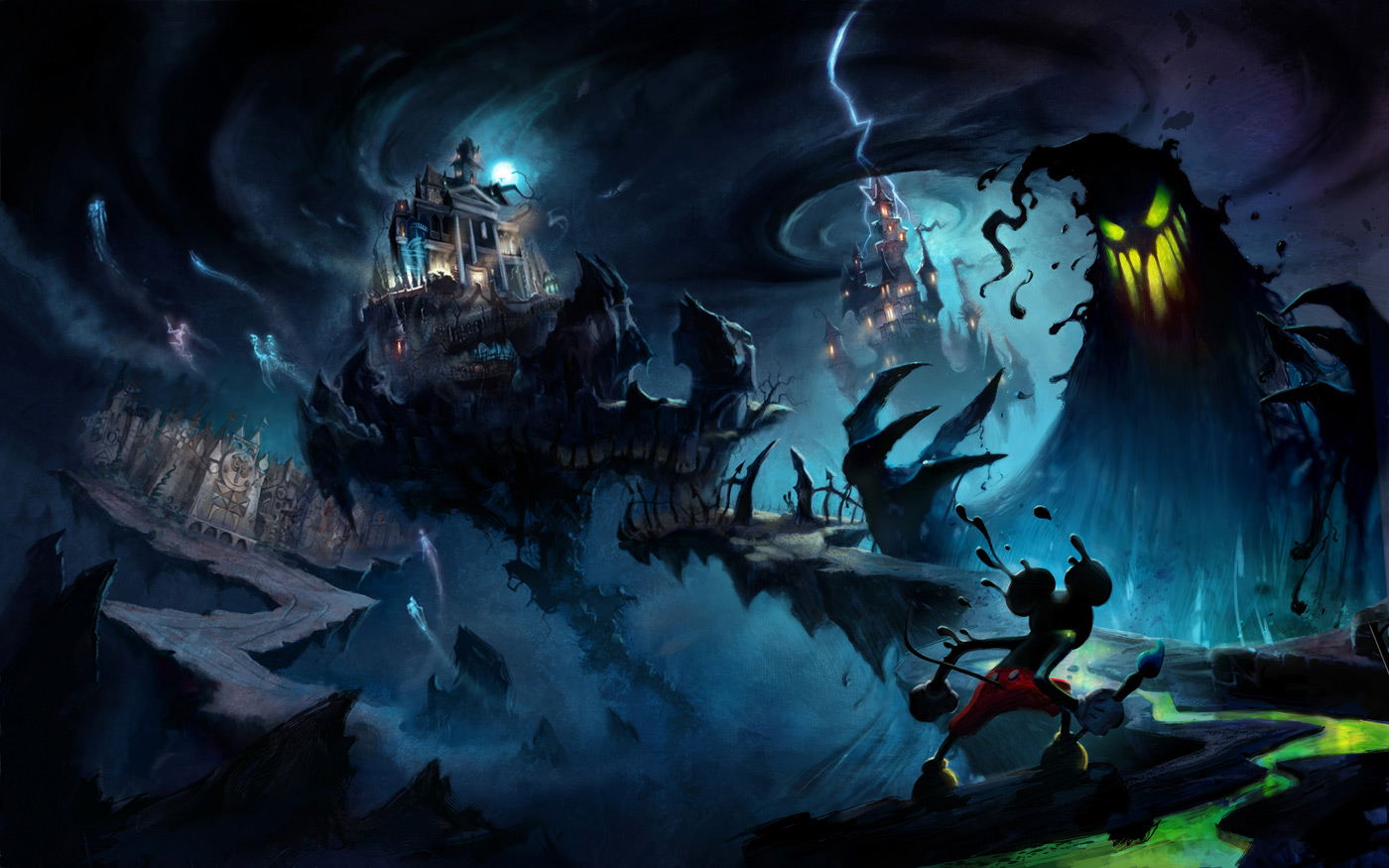
***
With Inspiration and Research from:
The Imagineering Story (2019), A Dream Called Walt Disney World (1981), DisneyChris.com, ThemeParkTourist.com, Widen Your World, Ideal Build-Out, Imagineer & Author Jason Surrell’s Collective Works, Maps of the Disney Parks by Kevin and Susan Neary, The Art of Disneyland by Jeff Kurti and Bruce Gordon, Disneyland World of Flowers by Morgan Evans, 101 Things You Never Knew About Disneyland by Kevin Yee and Jason Schultz, Disneyland: Then, Now, and Forever by Bruce Gordon and Tim O’Day, Walt Disney Imagineering: A Behind the Dreams Look at Making the Magic Real, and Disneyland - The First Thirty Years
What if the Disneyland Resort had 5,000 acres instead of 500?
What if Disney and Universal combined creative forces instead of Disney and MGM?”
***
With Inspiration and Research from:
The Imagineering Story (2019), A Dream Called Walt Disney World (1981), DisneyChris.com, ThemeParkTourist.com, Widen Your World, Ideal Build-Out, Imagineer & Author Jason Surrell’s Collective Works, Maps of the Disney Parks by Kevin and Susan Neary, The Art of Disneyland by Jeff Kurti and Bruce Gordon, Disneyland World of Flowers by Morgan Evans, 101 Things You Never Knew About Disneyland by Kevin Yee and Jason Schultz, Disneyland: Then, Now, and Forever by Bruce Gordon and Tim O’Day, Walt Disney Imagineering: A Behind the Dreams Look at Making the Magic Real, and Disneyland - The First Thirty Years
The Happiest Legacy on Earth
“If we can borrow some of the concepts of Disneyland and Disney World and Epcot, then indeed the world can be a better place.” - Ray Bradbury
“If we can borrow some of the concepts of Disneyland and Disney World and Epcot, then indeed the world can be a better place.” - Ray Bradbury
It took magic of a sort to transform 5,000 acres of flat, windswept land in Anaheim, California into the Disneyland Resort that we know today. It’s hard to believe that at one time there was nothing there but rows and rows of orange and walnut trees.
When Disneyland opened, it was a 20-year dream come true for Walt Disney, its creator, chief architect and head “Imagineer.” Disneyland would become the single greatest entertainment achievement of the twentieth century - an escape from the cares of today into the nostalgia of the past, the excitement of the future and the wonderful realm of fantasy. In his spare time between films and other projects, Walt would dream and plan for his entirely new concept in family entertainment, a place where parents and their children could have fun together; something of a fairytale kingdom, a metropolis of the future, and a place for people to find, above all, happiness and knowledge. In creating Disneyland, Walt Disney sparked the world’s imagination and established a dream that we could all share - and still share. “Disneyland really began when my two daughters were very young. Saturday was always ‘Daddy’s Day’ and I would take them to the merry-go-round and sit on a bench eating peanuts while they rode. And sitting there, alone, I felt that there should be something built, some kind of a family park where parents and children could have fun together.” - Walt Disney
But a family park without whips and shoot-the-chutes? All that money just for theming and landscaping?
"It was never a problem to convince the financiers that Disneyland was feasible," Walt recalled, "because dreams of this sort offer much collateral and great reward." Walt never had to sell his vacation home or borrow against his personal life insurance policies as he’d expected to do. Roy quickly found the money to support his younger brother’s ever growing dream. Armed with Herb’s now famous drawing, Roy pitched to the struggling ABC Network, the weekly, one-hour Disneyland which would bring the story of the Magic Kingdom into the homes of millions of American families. Walt captivated audiences. With financiers guessing fast return on their investments and offering their words of encouragement, in no time at all had the brothers secured the funds needed for the world’s first Magic Kingdom. Everyonewas on board, and Disneyland was a hit in the making.
5,000 acres began their transformation into the “Vacation Kingdom of the World” on July 16, 1954. The Stanford Research Institute recommended Anaheim, California, 30 miles southeast from Los Angeles, for its climate and affordable land. The location also laid ahead of a rapidly growing urban development and the advent of the California freeways. Disneyland began with Disneyland, two golf courses, two resort hotels, a campground, and beaches at a man-made lagoon. When Walt Disney World duplicated this formula with more acreage and lakes years later, they spent $400 million. In 1955 it was $80 million. Rear Admiral Joe Fowler, brought in first to consult on the construction of the Mark Twain, was hired as construction boss for the whole project. He got it - all of it - done in under a year, and incredibly so.
As one designer recalled, “When we began designing Disneyland, we looked at it just as we do a motion picture. We had to tell a story, or in this case a series of stories. In filmmaking, we develop a logical flow of events or scenes that will take our audience from point to point through a story.”
“If we were to ‘leapfrog’ from Scene One to Scene Three, leaving out Scene Two, it would be like sending the entire audience out to the lobby for popcorn in the middle of the film. When they came back, how could we expect them to understand what was happening? In filmmaking, although we can control the sequence of events, the viewer might walk in late and, through no fault of our own, miss Scene One and never catch up to the story. But in Disneyland, we had more control. We designed the entire Park so that a guest couldn’t miss Scene One or Two. From the moment he entered our ‘theater,’ that is, our front gate, Scene One would begin for him.”
“Walt set a standard early on with the Imagineers,” CEO Bob Iger said in an interview for The Imagineering Story. “There was a standard that surprised people, a standard that enabled people to come in expecting something and then giving them something even beyond that, beyond, really, their own imagination. So they left thinking, ‘Wow.’ Either ‘Only Disney could do that,’ or asking, ‘How did Disney do that?’”
As Disneyland’s design evolved, two important considerations were always in mind to maintain the theme of each area and to ensure easy access. For decades, county fairs and amusement parks had been a confusing amalgam of environmental design. Each show or pavilion competed for the visitor’s attention like billboards on a highway. Disneyland’s design was unprecedented. Rather than competing, five distinct areas would complement each other and contribute to the total Guest Experience. A timeless geometric pattern of radials led to a central hub, which made decisions easier and prevented people from feeling lost. You always know where you are. “Scene One'' is Main Street, U.S.A.
Main Street, U.S.A.
"Main Street, U.S.A. is America at the Turn of the Century - the Crossroads of an Era. The Gas Lamp and Electric Lamp - the Horse-Drawn Car and the Auto Car. Main Street, U.S.A. is everyone's hometown... The Heartline of America."
Adventureland
“Here is Adventure, Here is Romance, Here is Mystery. Tropical Rivers - Silently flowing into the unknown. The Unbelievable Splendor of Exotic Flowers…the Eerie Sounds of the Jungle... With eyes that are always watching. This is Adventureland.”
Frontierland
"A Tribute to the Faith, Courage, and Ingenuity of the Pioneers. Here we Experience the story of Our Country's Past. The Colorful Drama of Frontier America in the Exciting Days of the Covered Wagon and the Stagecoach. The Advent of the Railroad...and the Romantic Riverboat."
Fantasyland
“Here is the world of imagination, hopes and dreams. In this timeless land of enchantment, the age of chivalry, magic and make-believe are reborn - and fairy tales come true. Fantasyland is dedicated to the young and the young-at-heart - to those who believe that when you wish upon a star, your dreams do come true.”
Tomorrowland
"A Vista into a World of Wondrous Ideas, Signifying Man's Achievements...a Step into the Future, with Predictions of Constructive Things to Come. Tomorrow Offers New Frontiers in Science, Adventure, and Ideals. The Atomic Age. The Challenge of Outer Space...and Hope for a Peaceful and Unified World."
Now, at 70, Disneyland has grown to include three additional destinations, each in tribute to the same ideals, dreams and “hard facts that have created America” that Walt had intended for Disneyland. "Main Street, U.S.A. is America at the Turn of the Century - the Crossroads of an Era. The Gas Lamp and Electric Lamp - the Horse-Drawn Car and the Auto Car. Main Street, U.S.A. is everyone's hometown... The Heartline of America."
Adventureland
“Here is Adventure, Here is Romance, Here is Mystery. Tropical Rivers - Silently flowing into the unknown. The Unbelievable Splendor of Exotic Flowers…the Eerie Sounds of the Jungle... With eyes that are always watching. This is Adventureland.”
Frontierland
"A Tribute to the Faith, Courage, and Ingenuity of the Pioneers. Here we Experience the story of Our Country's Past. The Colorful Drama of Frontier America in the Exciting Days of the Covered Wagon and the Stagecoach. The Advent of the Railroad...and the Romantic Riverboat."
Fantasyland
“Here is the world of imagination, hopes and dreams. In this timeless land of enchantment, the age of chivalry, magic and make-believe are reborn - and fairy tales come true. Fantasyland is dedicated to the young and the young-at-heart - to those who believe that when you wish upon a star, your dreams do come true.”
Tomorrowland
"A Vista into a World of Wondrous Ideas, Signifying Man's Achievements...a Step into the Future, with Predictions of Constructive Things to Come. Tomorrow Offers New Frontiers in Science, Adventure, and Ideals. The Atomic Age. The Challenge of Outer Space...and Hope for a Peaceful and Unified World."
New Orleans Square
"At the Bend in the River, the 'Gay Paree' of the American Frontier. Here All Sizes and Shapes of Ships Sail - from the Majestic Sternwheeler ‘Mark Twain’ to the Mighty, Three-Masted Vessel ‘Columbia.’ At the Bend in the Mighty River, a New Orleans of Days Gone By."
Folktale Forest
"A Backwoods Refuge to the Great Heroes and Legends of the American Frontier. The myths of John Henry and Davy Crockett establish the romance and allure of the American West. Here is a Sleepy Backwoods Hamlet, a Tranquil Refuge to the Great American Myth and Folktale."
Liberty Street
"Here Stirs a New Nation Waiting to be Born. Thirteen Colonies have Banded Together to Declare Their Independence from the Bonds of Tyranny. It is a Time when Silversmiths Put Away Their Tools and March to the Drums of Revolution, a Time when Gentlemen Planters Leave Their Farms to Become Generals, a Time when Tradesmen Leave the Safety of Home to Become Heroes."
***
“I don’t want the public to see the world they live in while they’re in Disneyland. I want them to feel like they’re in another world.” - Walt Disney
Bulldozers and other huge machines excavated and hauled well over a million tons of earth to build a “berm” and sculpt the mountains, valleys, rivers, and streams envisaged by Walt and the Imagineers. Landscapers followed the bulldozers, transforming the desolate scene into the assorted jungles, forests, gardens and lawns. First came the big trees, then the little; shrubs, vines, and the irrigation systems; at the last minute came the flowers and the grass, which were then unrolled into full-grown lawns. The 20-foot “berm” surrounding the Park saw to the visual exclusion of the outside world. Railroad tracks were laid on the berm to carry turn-of-the-century passenger trains on a grand-circle tour of the Park. One contractor recalled a moment of pride as water first flowed into the Rivers of America, followed by desperation as it quickly disappeared into the soil.
Fantasy Lagoon, a 150-acre lake for beach trips and watersports, was situated far from the gates of Disneyland. Oil tycoon-turned film producer Jack Wrather majority owned and operated the original Disneyland Hotel from 1955 to 1988, then advertised as having an “Olympic Pool” and a “Top of the Park Lounge” with billboards advertising these attractions along the I-5 Freeway. The Marceline Hotel, named for Walt’s boyhood town, was Disney-owned and shared close real estate with a “Magic Kingdom Miniature Golf” and the much larger Golf Centre, gateway to the 18-hole Elias and Fantasy Lagoon Golf Courses which still exist today. 25-cents guaranteed all-day entry to the Disneyland Parking Lot. Holiday Land could hold up to 9,000 guests, designed as the ideal locale for company picnics, family reunions and the like, having its own baseball diamond and accommodations for horseshoes, volleyball, shuffleboard, and square dancing, a giant red and white-striped circus tent, and rows and rows of picnic tables. The Vacationland Recreational Vehicle Park would house RV’s, motor homes, tent trailers and more amidst a man-made forest in the finest recreational vehicle park in all Orange County. It even had an arcade with a billiard room.
In the geographic center and heart of the 5,000-acre property was Disneyland, isolated by its 20-foot berm and distance from the outside world.
The dream was becoming a reality. One by one, scenes of the Disneyland show were completed, and finally, Walt’s little idea - his bold new concept in family entertainment - was ready for its debut.
“I think that everyone here will one day be as proud to have been at this opening as the people who were there at the dedication of the Eiffel Tower,” actor Bob Cummings remarked, one of the many celebrities gathered for the Grand Opening of Disneyland on July 17, 1955. Will Jones of the Minneapolis Tribune wrote, "If it's an amusement park, it's the gosh-darndest, most happily-inspired, most carefully-planned, most adventure-filled park ever conceived. No ride or concession in it is like anything in any other amusement park anywhere."
"To all who come to this happy place: Welcome. Disneyland is your land. Here age relives fond memories of the past and here youth may savor the challenge and promise of the future. Disneyland is dedicated to the ideals, the dreams and the hard facts which have created America...with the hope that it will be a source of joy and inspiration to all the world."
- Walt Disney
- Walt Disney
At two o’clock that afternoon the gates opened. 10,000 special guests had been invited, but by day’s end, 33,000 people had arrived. Fortunately, it worked. No attractions broke down. Food and beverages were plentiful. Skeptics predicted July 17 to be a “Black Sunday” for Disney, the beginning of the end, but it wasn’t. In its first seven weeks, more than a million people passed through the turnstiles. Disneyland was an artistic and commercial triumph.
Disneyland would have to grow rapidly to meet demand, and as Walt went on to promise, "Disneyland will never be completed as long as there is imagination left in the world." Disneyland has become an international symbol of happiness and inspiration, a living showplace of beauty and magic filled with the accomplishments, joys and hopes of the world. More than 600 million “children of all ages” have enjoyed Walt Disney’s Magic Kingdom, including kings, queens, prime ministers and presidents. Through the years, Disney Imagineers have added new shows, attractions and themed lands, while improving original ones. Although the future holds the promise of even more dreams come true, the first 70 years at Disneyland marked an unforgettable era. The following is a written tour recapturing to the minute detail the history and magic of this alternate-reality.
***
